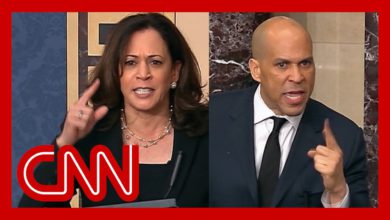
MONTGOMERY, Alabama – Gov. Kay Ivey will end Alabama's participation in federal unemployment programs geared to the pandemic, including supplements to state unemployment benefits and a suspension of a work search requirement.
The state will withdraw from the program on June 19, the governor's office said in a statement Monday. Applications for the pandemic-related benefits will be processed until then.
“We have announced the end date of our state of emergency, there are no industry shutdowns, and daycares are operating with no restrictions," Ivey said in a statement. "Vaccinations are available for all adults. Alabama is giving the federal government our 30-day notice that it’s time to get back to work.”
The decision means the state will withdraw from programs that provided an additional $300 weekly payment in unemployment; programs that extended unemployment benefits to self-employed, gig workers and part-time workers; extended benefits for those who exhausted regular benefits, and provided an additional $100 benefit to people with mixed earnings.
The governor follows other Republicans, such as South Carolina's Henry McMaster, who have announced early withdrawal from the federal programs, claiming they are a drag on employment numbers; the nation added 266,000 jobs in April, significantly below economists' expectations for the month. The U.S. Chamber of Commerce has made similar arguments, which Ivey repeated in her statement Monday.
“Among other factors, increased unemployment assistance, which was meant to be a short-term relief program during emergency related shutdowns, is now contributing to a labor shortage that is compromising the continuation of our economic recovery,” the statement said.
Studies have suggested the increased unemployment benefit has not affected job searches. A Yale University paper published last summer found that an added $600 unemployment benefit did not affect the rate at which individuals returned to work. A University of Massachusetts study also found higher unemployment benefits appeared to have little impact on overall employment levels.
Economists and staffing officials say that individuals caring for family members with illness or supervising children learning from home may be contributing.
The state's unemployment rate hit a 37-year high in April 2020, reaching 13.2%, though it dropped significantly afterward, falling to 4.7% by the end of the year. It was 4% in February.
The size of the state labor force stayed roughly the same between February 2020 and February 2021, going from 2.236 million to 2.248 million, according to statistics compiled by the Alabama Department of Labor. The total number of employed people dipped slightly, from 2.177 million in February 2020 to 2.157 million last February.
Initial unemployment claims in Alabama rose this year, hitting a peak of 18,710 for the week ending March 27. They have fallen back since then, to 10,325 for the week ending May 1.
According to the CDC Centers for Disease Control and Prevention, about 34% of Alabamians have received at least one dose of the COVID-19 vaccine, compared with 43% nationwide. About 26% of the state has been fully vaccinated, compared with 35% in the country.
Contact Montgomery Advertiser reporter Brian Lyman at 334-240-0185 or [email protected].
Source link









